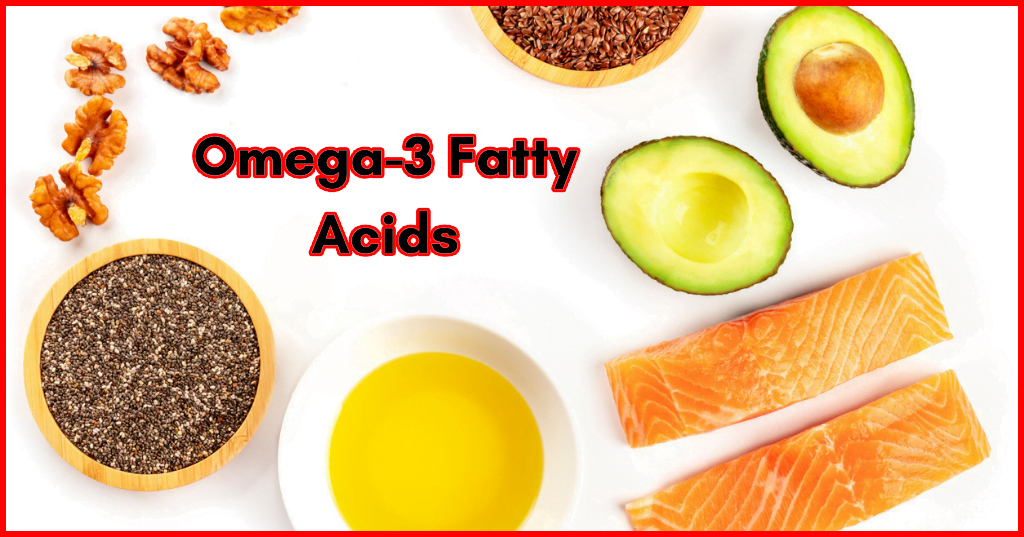
What are Omega-3 fatty acids? What are the benefits of krill oil supplementation?
1. What are Omega-3 fatty acids?
Fatty acids are the main components of triglycerides, phospholipids, and cholesterol esters. They are an important source of energy for the body and an important component of cells. More than 70% of human cell membranes are composed of fatty acids. There are many ways to classify fatty acids. According to the number of unsaturated bonds in the carbon-hydrogen chain in their chemical structure, they can be divided into saturated fatty acids and unsaturated fatty acids. The difference between them lies in whether there is a C=C double bond in the fatty acid chain. In the naming method of fatty acids, they are classified according to the biosynthesis pathway of fatty acids in animals. The most common ones are Omega-3 (ω-3) series and Omega-6 (ω-6) series fatty acids. The positions of the C=C double bonds of these two types of fatty acids are different, and they have different biosynthesis pathways.

Since the human body can only synthesize saturated fatty acids and monounsaturated fatty acids (oleic acid), but cannot synthesize polyunsaturated fatty acids, such as Omega-3 and Omega-6 series fatty acids, which can only be obtained from food, these two types of fatty acids are called essential fatty acids.
Fatty acids and health
People have been exploring the relationship between fatty acids and health. In the 1960s, people paid attention to the ratio of polyunsaturated fatty acids to saturated fatty acids in the diet. It was believed that this ratio was negatively correlated with serum cholesterol, but it was later proven to be illogical and was subsequently abandoned. It was not until the late 1970s that Bang and Dyerberg discovered the potential health benefits of Omega-3 fatty acids (EPA and DHA) in the Greenland Inuit, which triggered scientists to study these new fatty acids and the relationship between Omega-6: Omega-3 in serum and health. Nutritionists suggested that the ratio (1~6): 1 is a reasonable range.
In our daily diet, the main sources of lipids are lard and tallow from animal oils, which are saturated fatty acids. In the vegetable oils we consume daily, Omega-6 fatty acids account for a large proportion. This leads to insufficient intake of Omega-3 fatty acids in our daily diet. The following table shows the ratio of Omega-6 to Omega-3 in common edible oils .
| Types of oil | Omega-6:Omega-3 |
|---|---|
| Corn oil | 58:1 |
| Peanut Oil | 45.5:1 |
| Soybean oil | 13.4:1 |
| Sunflower seed oil | 62:1 |
| Sesame oil | 138:1 |
| olive oil | 14:1 |
| Rapeseed Oil | 2.2:1 |
| Linseed oil | 0.2:1 |
The Omega-3 fatty acids involved in human metabolism include α-linolenic acid (ALA), eicosapentaenoic acid (EPA) and docosahexaenoic acid (DHA). α-linolenic acid can be obtained from plants. EPA and DHA can be synthesized in the body from α-linolenic acid, but the synthesis efficiency is slow. Alternatively, they can be obtained from algae and fish. Therefore, when our diet lacks fish fat or α-linolenic acid, it will lead to a lack of Omega-3 fatty acids. Omega-3 fatty acid supplements are receiving more and more attention and research.
2. Krill Oil: A Good Supplement of Omega-3 Fatty Acids
Currently, the most common Omega-3 fatty acid supplements are fish oil, krill oil and algae oil.
Fish oil is extracted from the fatty tissue of oily fish. The main component of fish oil is triglycerides, in which omega-3 fatty acids exist. However, fish do not actually produce omega-3 fatty acids. Fish accumulate omega-3 fatty acids by eating microalgae or krill that accumulate omega-3 fatty acids. Fatty carnivorous fish such as swordfish, mackerel and albacore tuna have high levels of omega-3 fatty acids, but because they are at the top of the food chain, they are subject to bioaccumulation and may also accumulate marine pollution and toxic substances.
Krill oil is an oil extracted from Antarctic krill ( Euphausia superba ). Unlike fish oil, krill oil contains phospholipids (phosphatidylcholine), and its omega-3 fatty acids are in the form of phospholipids, accounting for 40% of the total fatty acids [4]. Phospholipids exist in all plant and animal cells, are components of cell membranes, and are also the main component of lung surfactant. Since phospholipids are bipolar, choline and phospholipids have good emulsifying properties that allow lipids to pass through cell membranes smoothly, which is beneficial to the absorption, transport and metabolism of fats. Therefore, krill oil is considered to be more easily absorbed by the human body.

Krill oil
A 2013 study showed that krill oil supplementation was more effective than fish oil in increasing ω-3 polyunsaturated fatty acids, reducing the ω-6:ω-3 ratio, and improving the ω-3 index. The absorption rate of EPA and DHA bound to phosphatidylcholine in krill oil was higher than that of fish oil. A comparison of fish oil and krill oil in 120 people showed that consuming fish oil may cause burping, fishy smell, and gastrointestinal reactions including bloating, indigestion, abdominal pain, and flatulence, but consuming krill oil has no gastrointestinal reactions, but may cause burping and an aftertaste in the mouth. [5]
In addition to Omega-3 fatty acids, krill oil also contains other bioactive components.
Take astaxanthin for example . Astaxanthin is the main carotenoid found in some marine animals and algae. It is more efficient than other common carotenoids in life, such as zeaxanthin, lutein, canthaxanthin and beta-carotene [6]. The characteristic deep red color of krill oil is due to the presence of astaxanthin. Studies have shown that the astaxanthin content in krill oil ranges from 40 to 5000 mg/kg, depending on the krill material, extraction method and analysis method [6].
A new direction in krill oil research in recent years is to study the benefits of combining krill oil products with other functional supplements (such as other carotenoids, coenzyme Q10, vitamin D, and conjugated linoleic acid) [8,9]. However, these studies are still at the animal experiment stage.
3. How to choose krill oil?
Nowadays, high-fat, high-sugar diet is one of the risk factors for obesity and hyperlipidemia. At the same time, many people do not consume enough aquatic products in their daily diet, resulting in unbalanced fatty acid intake. Appropriate supplementation of Omega-3 fatty acids can adjust the ratio of Omega-6 to Omega-3.
Currently, krill oil products are usually available in the market as dietary supplements in the form of soft gels, capsules, gum and tablets. When choosing krill oil, pay attention to and compare the total fat content in the product label, the proportion of Omega-3 fatty acids + phospholipids in the total fatty acids, and the astaxanthin content.
MegaRed is a krill oil brand with significant sales in the United States. MegaRed’s krill oil uses patented purification technology to increase the proportion of core ingredients in krill oil while removing impurities and odors. The author did not experience any peculiar or fishy smell during consumption, nor did he experience any adverse gastrointestinal reactions. Its 750mg refined krill oil contains 225mg of omega-3 fatty acids, accounting for 30%, 390mg of phospholipids, accounting for 52%, and 60mcg of astaxanthin.
For young people who have never tried krill oil, you can try the entry-level + small-sized classic krill oil soft capsules; those who need to supplement more Omega-3 fatty acids can choose high-content, ultra-pure essence krill oil soft capsules. Recently, MegaRed has a new product promotion on JD.com, so you can go for it.
References:
1、Harris, William S. (2018). The Omega-6:Omega-3 ratio: A critical appraisal and possible successor. Prostaglandins, Leukotrienes and Essential Fatty Acids, (), S095232781830067X–./
2、J. Dyerberg, H.O. Bang, Haemostatic function and platelet polyunsaturated fatty acids in eskimos, The Lancet (1979) 433–435.
3、https://fdc.nal.usda.gov/fdc-app.html#/food-details/171015/nutrients
4、Jonathan M. Kwantes & Oliver Grundmann .A Brief Review of Krill Oil History, Research,
and the Commercial Market.Journal of Dietary Supplements, Early Online:1–13, 2014
5、Ramprasath, Vanu R; Eyal, Inbal; Zchut, Sigalit; Jones, Peter JH (2013). Enhanced increase of omega-3 index in healthy individuals with response to 4-week n-3 fatty acid supplementation from krill oil versus fish oil. Lipids in Health and Disease, 12(1), 178–
6、Ambati, R. R., Phang, S.M., Ravi, S., & Aswathanarayana, R. G. (2014).Astaxanthin: Sources, extraction, stability, biological activities and itscommercial applications—A review. Marine Drugs, 12(1), 128–152
7、Xie, Dan; Gong, Mengyue; Wei, Wei; Jin, Jun; Wang, Xiaosan; Wang, Xingguo; Jin, Qingzhe (2019). Antarctic Krill Oil: A Comprehensive Review of Chemical Composition, Extraction Technologies, Health Benefits, and Current Applications. Comprehensive Reviews in Food Science and Food Safety,
8、Costanzo, M., Cesi, V., Palone, F., Pierdomenico, M., Colantoni, E., Leter, B., . . . Stronati, L. (2018). Krill oil, vitamin D and Lactobacillus reuteri cooperate to reduce gut inflammation. Beneficial Microbes, 9(3), 389–399.
9、Alvarez-Ricartes, N., Oliveros-Matus, P., Mendoza, C., Perez-Urrutia, N., Echeverria, F., Iarkov, A., . . . Echeverria, V. (2018). Intranasal cotinine plus krill oil facilitates fear extinction, decreases depressive-like behavior, and increases hippocampal calcineurin A levels in mice. Molecular Neurobiology, 55(10), 7949–7960
10、Dariush Mozaffarian, MD, DrPH. Effectiveness of a Novel ω-3 Krill Oil Agent in Patients With Severe Hypertriglyceridemia. JAMA Netw Open. 2022 Jan; 5(1): e2141898.


5 thoughts on “What are Omega-3 fatty acids? What are the benefits of krill oil supplementation?”